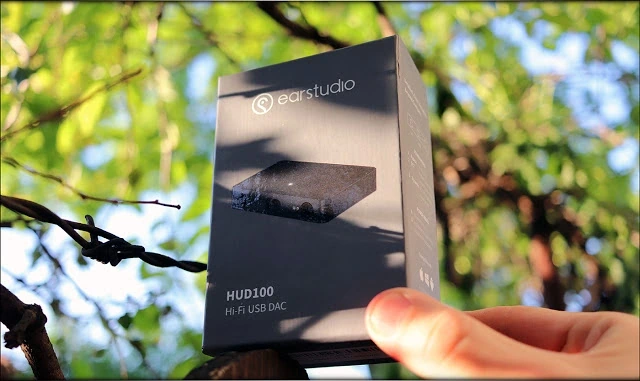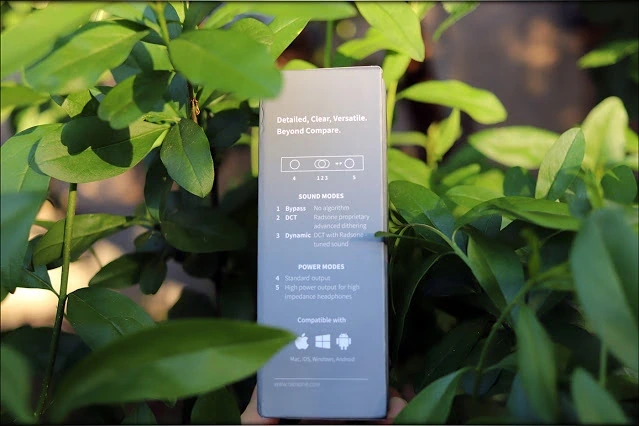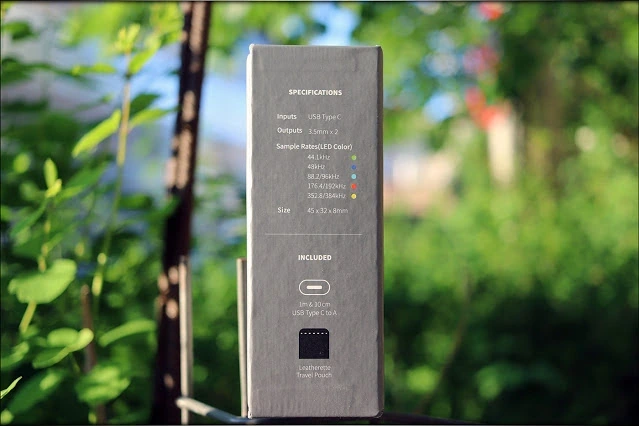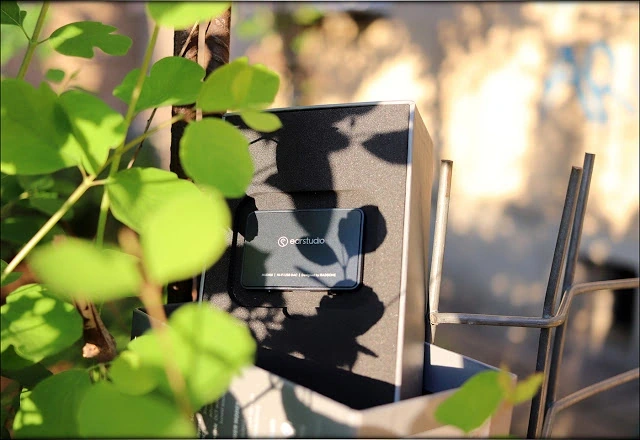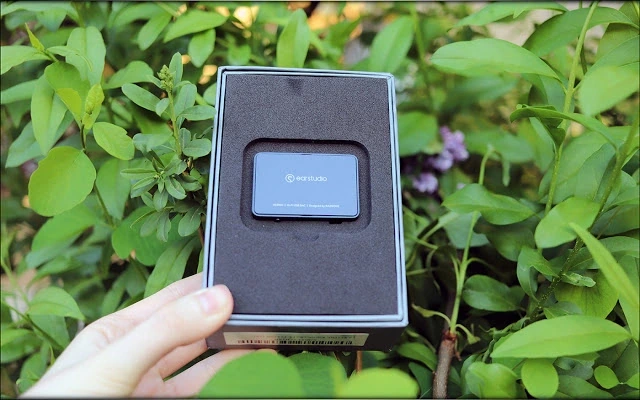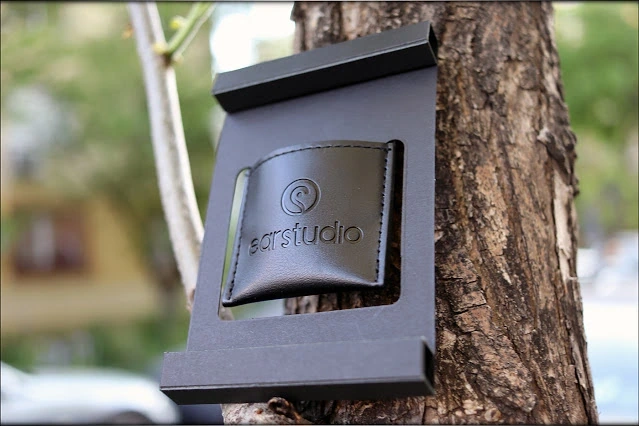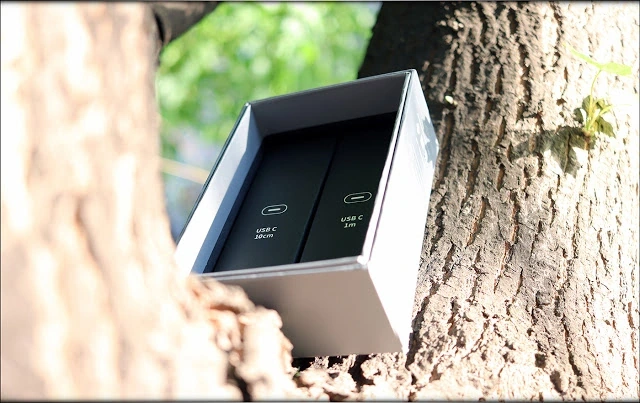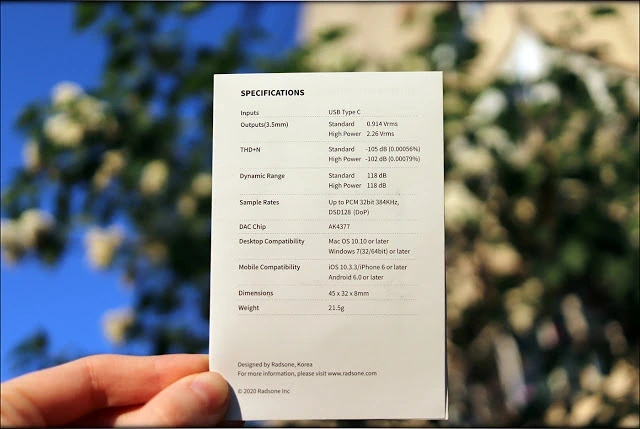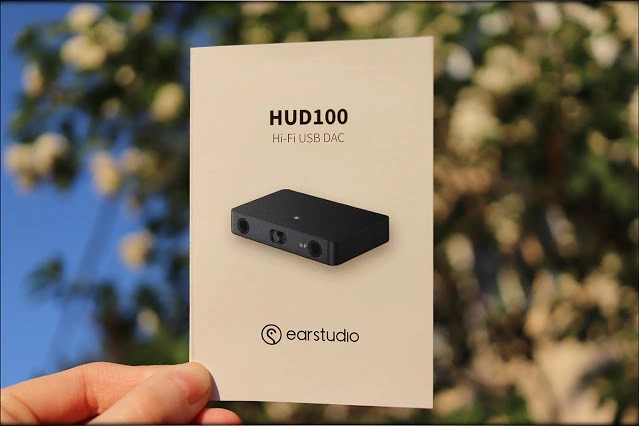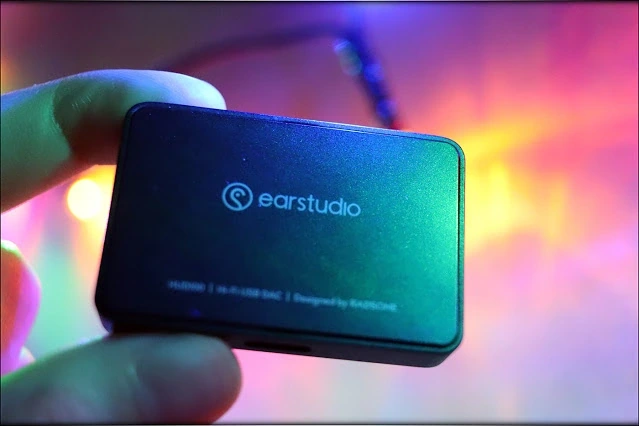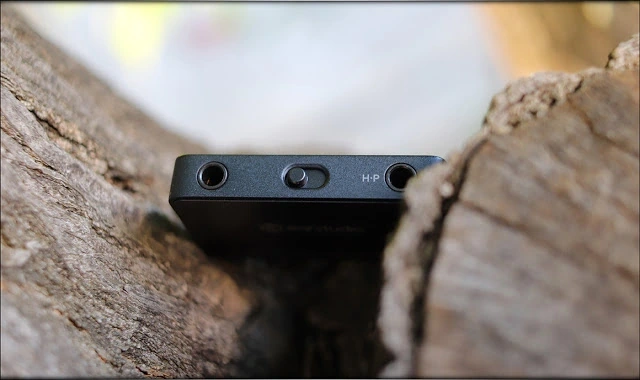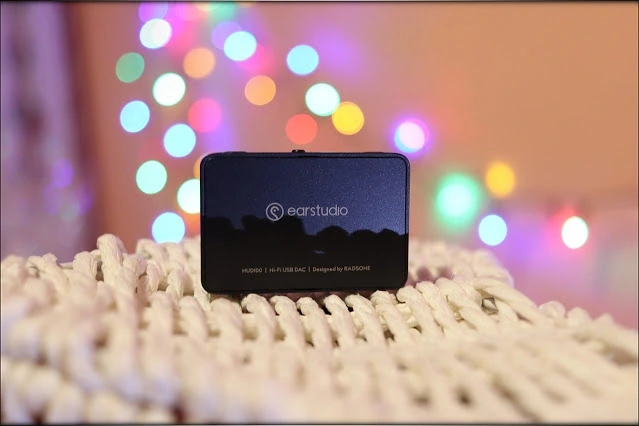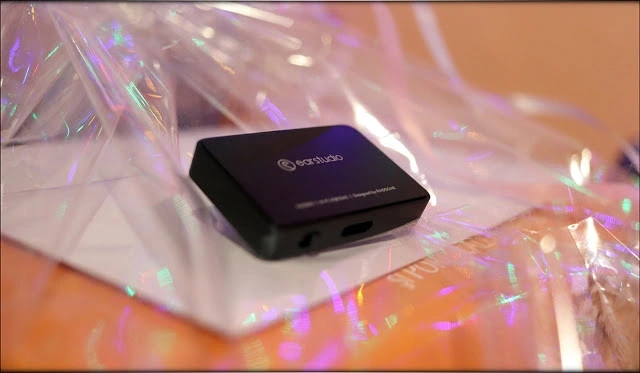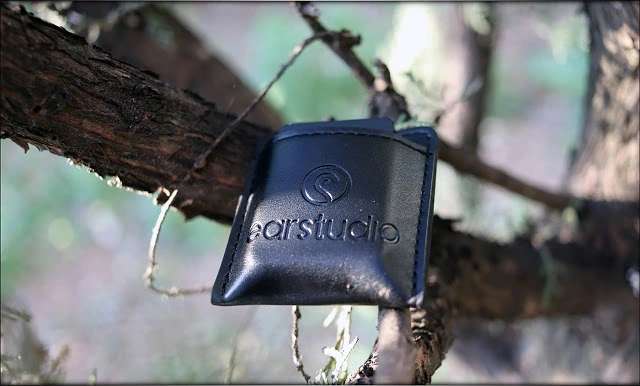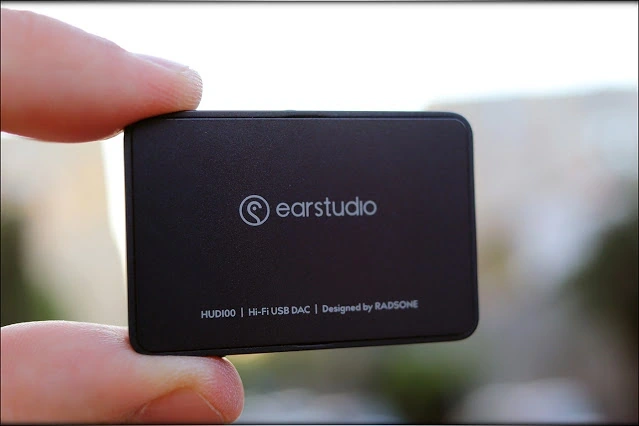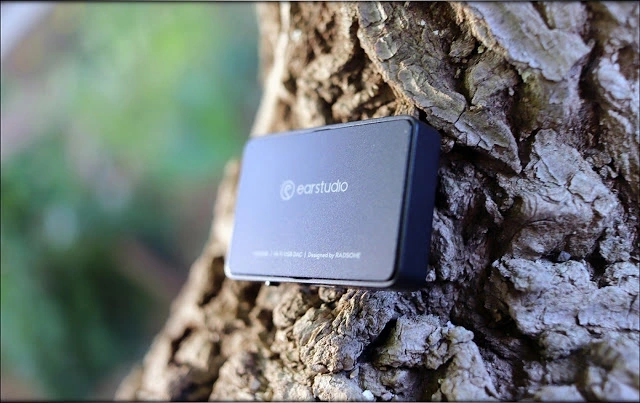Views 28,705
Half Done, Half Won – Earstudio HUD100 DAC/AMP Review
When you need something tiny, something that’s practical, you know that there will be some sacrifices. HUD 100 is smaller than BTR5, it has a nimble body, and it is priced at 140 USD, and for that price, HUD100 has two headphone outputs, one in low gain and one in high gain, three filters, and a Type-C input, but not a lot of power. It will be compared to the Earmen TR-AMP, Lotto Paw S1, and Pro-Ject Pre-Box Digital S2 DAC/AMP. As far as pairings go, I selected Periodic Audio Carbon, iBasso AM05, and Fischer AMPs FA-4E-XB.
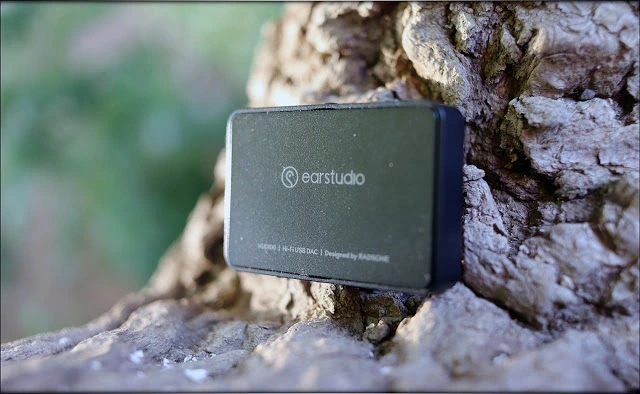
Introduction – HUD100
The tiny thing that HUD100 is, really really tiny. It looks like a small pack of mints, and even then, it is tiny. The company behind though, is not so small, and they’re known as a Korean producer of high-quality audio products, and are also known to be fairly reliable. It should be noted that I have absolutely no affiliation with Earstudio. I’d like to thank Earstudio for providing the sample for this review. This review reflects my personal experience with Earstudio HUD100. Every opinion expressed is mine and I stand by it, the purpose of this review is to help those interested in Ear Studio HUD100 find their next music companion.
Product Link
Packaging
First things first, let’s get the packaging out of the way:
The package is minimalistic. As I presented in my video review, it doesn’t quite compare to the likes of FiiO Q5S, but it is fairly good. The price is high, so I have to mention that the carrying leather case is only for carrying it, you can’t use the HUD100 while inside the case. Furthermore, the cables selection is not great, and you can’t use any cable with it, so the package gets a passing grade, but is only minimalistic.
What to look in when purchasing a high-quality entry-level DAC
Technical Specifications
Build Quality/Aesthetics/Functionality
The unit itself has two headphone outputs, one in low gain, and one in high gain. I would recommend always using the high gain, as it tends to have better dynamics and punch, although it also has marginally higher noise output, which I could hear with IEMs like Campfire Atlas and FiiO FH7.
They named the outputs standard and high power, but the truth is that neither doesn’t have enough power for more than IEMs anyways, even if you listen at moderate levels. The weight of the unit is really low though, and although in my photos, and every other reviewer’s photos it looks kinda big, the unit is really tiny. Portability is the key word here, but for that portability, some things had to be sacrificed.
There’s a filter selector, which you can use to select between three filter modes, and the filter is at the front, in between the headphone outputs. Although the most processed variant of the filter, the Dynamic, sounds the best. There’s an off variant, a DCT variant, which is Radsone’s own algorithm and dithering, and a DCT with tuning too.
The input is in the Type-C format, which works great, but you will need an OTG adapter for some smartphones, which makes using it a bit odd. There is no short Type-C to Type-C cable, so although the unit is tiny, the portability is not that great as you will need an OTG adapter to use, besides the Type-C 10 cm cable. A short USB cable, if you can find one on Aliexpress, would be great, but in my experience, the cables that came with FiiO Q5s or other portable DAC/AMPs did not work.
Video Review
Sound Quality
There are three versions of the sound quality, depending on how much you engage the filtering. With that filtering turned off, the sound is kind of deaf and boring, a bit flat in every way. It works great for a reference sound, but not so great if you’re looking for a fun sound. Well, if you want to listen to the best that the HUD100 has, I totally recommend engaging the dithering and even their own flavor, after all you paid for the entire DAC, you should use the entire DAC.
The bass is pretty deep and well rounded, it is not particularly quick, but it gives the impression of good impact and a nice amount of volume / body. The overall bass leans on a natural speed to achieve a full-bodied impact. There’s very little times that I wanted more, but more bass would have been welcome with IEMs and Headphones that are naturally bright, like the SoundMagic HP1000, or the iBasso AM05.
On the other hand, with the dithering and Earstudio’s own flavor engaged, the midrange is quite natural, flows freely, has a uniquely effortless presentation, and has great dynamics. The tonality is ever so slightly thick and not the most edgy or textured out there, but the amount of clarity it has, makes HUD100 a great pair for IEMs that are made for monitoring like the FA-4EXB, and even something the Audiosense AQ3 sounds quite nice with the HUD100 when it comes to the midrange.
The treble is on the slightly smoother side, without much edge, which makes it seem a bit compressed dynamically too. The very top edge works well for brighter IEMs, because it doesn’t reveal brightness, and it tends to hide mastering mistakes, making listening to music quite easy and fun, even if you have slightly less expensive headphones, or if you listen to older music with poor mastering. Makes me wonder why we keep calling it poor mastering, when those older songs had way more dynamic range, and even with their brighter presentations, sounded really good, while some more recent remaster variants, while toning down the treble, also removed some of that dynamic and punch that made those songs fun in the first place.
At the end of the day, you have about two signatures, one that is flat, a bit boring, but great for reference, and one that’s smoother, more liquid, with a well rounded bass, to enjoy with the HUD100.
Comparisons
The comparison list includes pretty pricey competitors, but this is because the HUD100 is quite pricey by itself. With a price tag of 140 USD, it needs to stand up against products that are at least similar to its price, if not products that cost more, because it is not coming from a brand that’s as known, like Lotoo, Earmen or Pro-Ject.
The Pre-Box Digital S2 is indeed quite a bit more pricey, but here’s a fun thing, the HUD100 may actually be a bit better than it when it comes to driving certain IEMs, although the HUD100 cannot work as a standalone DAC, not having a true Line Out, which may actually have been a nice feature.
Earstudio HUD100 vs Earmen TR-AMP (140 USD vs 250 USD) – Earmen TR-AMP is a much more interesting DAC/AMP if you need something to drive headphones too, or if you need a DAC that you can use with your desktop setup too. Furthermore, it has a more dynamic sound in general, with more punch and more impact, but it doesn’t have the same smooth midrange that HUD100 has, and it is much much larger. It also has a battery that you need to charge and you need to make sure it has enough juice to be able to enjoy it. By comparison, HUD100 only eats a bit of battery from your laptop or Smartphone, and it doesn’t need two cables, one for power and one for data, it uses just one. If you don’t need the extra portability, the TR-AMP is more versatile, but for something small and magically smooth, the HUD100 makes a lot of sense.
Earstudio HUD100 vs Lotoo Paw S1 (140 USD vs 170 USD) – Lotoo PAW S1 is very similar to HUD100 in terms of overall usage and design. The main differences are that Paw S1 has a traditional EQ, and it has a balanced headphone output too, so it can do much more than HUD100 at pretty much the same price. Not only that, but Paw S1 has much more driving power, with more punch and impact. The HUD100 has a bit more hiss, but actually manages to have a smoother midrange, and with all the settings engaged, it somehow manages to be more musical, while being similarly detailed, and have a smoother treble, being easier to pair with a wider variety of IEMs. For headphones, you’ll need S1, the HUD100 may not be enough unless you’re using something really easy to drive, like Verum One.
Earstudio HUD100 vs Pro-Ject Pre-Box Digital S2 (140 USD vs 400 USD) – The Pre Box S2 is also pretty pricey compared to the actual performance, and compared to its competition, so I thought it would make an interesting comparison to see how it compares to HUD100. Most people will be purchasing the S2 Digital to use with a speaker system, where it is undoubtedly great, but if you have just a pair of headphones or IEMs, you’ll probably like to know that HUD100 sounds quite a bit more natural with a smoother midrange, with more bass body, and with a deeper impact. The treble is also smoother, with less edge and comes through as sounding more natural in general.
Pairing
It ain’t perfect, but it is pretty darn close.
Earstudio HUD100 + iBasso AM05 (140 USD + 300 USD) – AM05 is an interesting pairing because it was hard to pair, it is a bit too lean, the bass doesn’t have enough body and mass to be substantial, but HUD100 somehow manages to make the AM05 truly sing, it gives them both a smoother treble, a smoother midrange, but also a fuller bass, that in the end sounds quite natural and open. There’s also a great sense of dynamics, and the detail is top notch, so all in all, this is a favorite pairing of mine.
Earstudio HUD100 + Fischer AMPs FA-4E-XB (140 USD + 450 USD) – The Fishcer AMPs FA-4E-XB is a different thing, very linear and precise, quick, and lacking a sense of fun and enjoyment, being there for the artists, and letting you experience music as an artist is, while performing live. It is an irony, but I always imagined that a singer would listen to the most beautiful melodies, but instead they need the ultimate precision and clarity, without much enjoyment and fun. Here’s where HUD100 can come in handy. On one hand, it can give you a transparent window, revealing how that type of sound is like, but if you want to tune in the FA-4E-XB to sound more fun, you can also do that through the HUD100, by engaging the effects, and listening to a much more fun presentation, with a smoother bass, smoother midrange and smoother treble, with ,more body and impact, and ultimately, to a presentation that is more fun.
Earstudio HUD100 + Periodic Audio Carbon (140 USD + 400 USD) – The Carbon is a very heavy IEM, with a smooth midrange and a strong enough treble to counter that really heavy bass, but on a scale from one to ten, it is in top three the most bassy IEMs I heard to date, in the same line as the IMR Acoustic R2 Aten and IMR Acoustics R1 Zenith. This is where the “flat” preset of the HUD100 comes in handy, it makes the Carbon slightly more settled, it makes them reveal just how detailed and musical they are, and it flattens some of those bumps in the bass and the treble, making the entire IEM shine.
Value and Conclusion
The price of HUD100 is really high for what it is, if you don’t plan on driving particularly fun-sounding IEMs, and if you don’t need the shape and design, as there are alternatives in this price range that fare better, like the PAW S1, which has a balanced output, and much more driving power. This being said, nothing doesn’t have quite the same signature with the rounded bass, liquid and smooth midrange, and the smoother treble that pairs well with both brighter and darker IEMs, and nothing doesn’t have quite the same small rectangular shape of the HUD100.
The package is once again not exactly right for the price range, as the carrying leather case cannot be used while using the device, and the cables need an OTG adapter which is not included in the package.
The sound though, is fairly smooth, fairly detailed, and has a good amount of impact. The bass is well-rounded, the treble is somewhat smooth, and there’s a good amount of dynamic, if you engage the dithering and all the effects possible, but you also have access to a flat signature, if you need one.
At the end of the day, the HUD100 may be a bit controversial, but especially for those who need a light, small DAC for driving mainly IEMs, and if you want to experience a rather dynamic sound, if you don’t have a very hiss-sensitive IEM, and if you want to have access to two headphone outputs, the HUD100 is an interesting product, right out of Korea.
--- Please remember to stay safe, and always have fun while listening to music!---
- If you have a dime to spare, please donate, and help us! It would make the day brighter for me and my wife-
Full Playlist used for this review
We listened to more songs than those named in this playlist, but those are excellent for identifying a sonic signature. I recommend trying most of the songs from this playlist, especially if you’re searching for new music! The playlists are different for Spotify, Tidal and Youtube, and based on the songs I enjoy and are available on each!
https://www.youtube.com/playlist?list=PL_cjBXGmwSHSdGcwuc_bKbBDGHL4QvYBu
https://open.spotify.com/playlist/5J3oloz8Riy9LxEGenOjQ0?si=979ba4f082414be7
https://tidal.com/browse/playlist/330fd544-8e5b-4839-bd35-676b2edbb3d5
--- Contact Us ---







